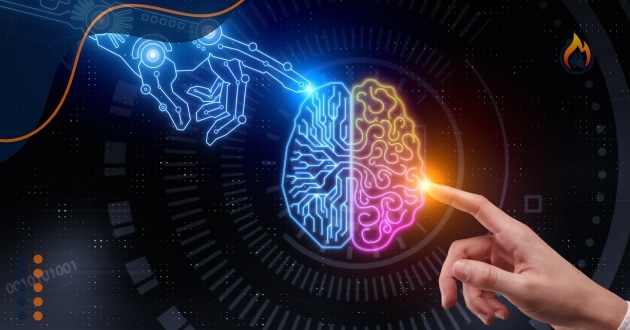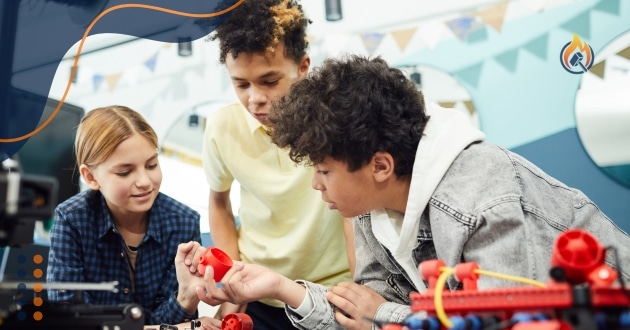The impact of technology on education has been profound in recent years, fundamentally altering the way knowledge is delivered and consumed in modern classrooms. From virtual reality tools that transport students to ancient civilizations to AI-driven platforms that personalize learning experiences, technology is revolutionizing traditional educational paradigms. Consequently, teachers and students alike are adapting to a digital-first environment that fosters engagement and innovation.
Moreover, the impact of technology on education is not limited to urban centers or developed nations. Through initiatives aimed at increasing accessibility, digital tools are reaching underserved communities worldwide. These advancements are breaking barriers of distance and inequality, ensuring that students from all backgrounds have access to quality education. As a result, technology is acting as a bridge, bringing global classrooms closer together and fostering inclusivity.
Finally, while the impact of technology on education has many advantages, it also poses challenges, such as digital literacy gaps and the need for reliable infrastructure. Educators and policymakers must work collaboratively to address these issues, ensuring that the benefits of technological integration are equitably distributed. By navigating these challenges effectively, modern classrooms can fully harness the transformative power of technology.
Advancements in Educational Tools: Impact of Technology on Education

Technology has introduced a plethora of tools that enhance the learning process. For instance, interactive whiteboards and learning management systems (LMS) have replaced traditional chalkboards and paper-based assignments. Tools like Google Classroom and Canvas allow educators to streamline administrative tasks while providing students with a centralized platform for coursework.
Additionally, virtual reality (VR) is creating immersive learning experiences. In a study by Stanford University, students using VR to explore complex scientific concepts retained information 40% better than those using traditional methods. These tools not only improve retention but also encourage curiosity and active participation in the classroom.
Educational technology has revolutionized the way students and teachers interact, paving the way for more efficient and engaging learning environments. Platforms offering Educational Tech Tools Online provide a plethora of resources, from virtual whiteboards to adaptive learning software.
These tools not only streamline classroom management but also tailor educational experiences to individual student needs, making lessons more dynamic and impactful. As schools integrate these innovations, they bridge the gap between traditional teaching methods and modern-day expectations, ultimately enhancing the overall classroom efficiency and learning outcomes.
The Role of Artificial Intelligence

Artificial intelligence (AI) is reshaping how students learn and how educators teach. AI-driven platforms like Duolingo and Khan Academy use algorithms to personalize lessons based on individual student performance. This adaptive learning ensures that students receive tailored support, making education more effective.
Moreover, AI is automating administrative tasks, such as grading and attendance tracking, freeing up teachers to focus on student engagement. For example, a partnership between IBM Watson and a major university led to the development of AI tools that predict student success rates, allowing educators to intervene proactively when students face challenges.
Bridging the Accessibility Gap: Impact of Technology on Education
One of the most significant benefits of technology in education is its ability to improve accessibility. Online learning platforms such as Coursera and EdX offer free or affordable courses from top universities, making higher education available to a global audience.These platforms allow students from all corners of the world to gain knowledge and skills that were previously out of reach.
Additionally, they provide flexible learning options, enabling individuals to balance education with work, family, or other commitments. This democratization of education is empowering millions to advance their careers and personal growth without the constraints of location or cost.
In developing nations, innovative solutions are bridging the digital divide and transforming education in underserved communities. Solar-powered tablets preloaded with educational content are a prime example of how technology is driving change. A notable program in Kenya, for instance, equipped rural schools with these devices, resulting in a remarkable 25% improvement in literacy rates among students within a year.
Beyond literacy, similar initiatives in other countries have introduced math, science, and critical thinking modules to students who previously had no access to formal education. Furthermore, partnerships between non-profits, governments, and tech companies are expanding the reach of these tools, ensuring that even the most remote areas benefit from technological advancements.
These efforts highlight the potential of technology to address educational disparities and promote equitable learning opportunities across the globe, paving the way for a more inclusive and informed future.
Challenges of Integrating Technology
While the benefits are numerous, integrating technology into education is not without its hurdles. A lack of infrastructure, such as high-speed internet and modern devices, remains a significant barrier, particularly in rural areas. Additionally, educators often require training to effectively use digital tools, which adds another layer of complexity.
Cybersecurity is another concern. With the increasing use of online platforms, protecting student data and maintaining privacy are critical issues that must be addressed. Schools and governments need to invest in robust security measures to ensure a safe digital learning environment.
Proven Insights from Experts: Impact of Technology on Education
Experts agree that technology’s role in education is transformative but requires strategic implementation. Dr. Lisa Chang, an education technology consultant, emphasizes, “The key to successful integration lies in balancing technology with traditional teaching methods. It’s not about replacing educators but enhancing their ability to reach students effectively.”
A case study from a high school in Canada highlights this point. By introducing a blended learning model combining face-to-face teaching with online resources, the school improved student engagement by 30% in one academic year. This demonstrates how thoughtful implementation can yield significant benefits.
Preparing Students for a Digital Future
The undeniable impact of technology on education extends far beyond the traditional classroom setting, effectively equipping students with the critical skills essential for thriving in today’s digital age.
For example, subjects such as coding, data analysis, and digital collaboration are now becoming integral components of modern curricula, gradually preparing students for future careers in an increasingly tech-driven world. Furthermore, this seamless integration of technology ensures that learners stay competitive and adaptable to the ever-evolving demands of the global workforce.
In addition, technology consistently fosters essential critical thinking and advanced problem-solving skills, which are indispensable in the 21st century. For instance, interactive simulations and project-based learning activities provide students with the unique opportunity to tackle real-world challenges in a highly engaging manner.
Consequently, these methods not only enhance their creativity but also sharpen their analytical abilities. Therefore, with the continuous adoption of technology in education, students are not just gaining knowledge but are also being empowered to innovate and think strategically in a rapidly changing environment.
Conclusion: Impact of Technology on Education
The undeniable impact of technology on education continues to evolve, offering transformative benefits that are significantly reshaping the ever-changing landscape of modern classrooms. For instance, from the groundbreaking opportunities of personalized learning to the much-needed enhanced accessibility, technology has consistently unlocked possibilities that were previously unimaginable.
Nevertheless, to fully realize and sustain these remarkable benefits, it is equally crucial to proactively address challenges, such as pervasive infrastructure gaps and the ever-growing cybersecurity risks. In turn, with concerted efforts from policymakers, educators, and tech companies alike, these obstacles can be mitigated, ensuring that the future of education remains both innovative and inclusive across Canada and beyond.
Additionally, the role of educators cannot be overstated. Continuous training and support for teachers are essential to ensure they can effectively integrate technology into their teaching methods. Governments, private institutions, and tech companies must work collaboratively to build robust digital infrastructures and provide equitable access to resources. These partnerships not only enhance the learning environment but also help reduce disparities in education, creating a more inclusive system where no student is left behind.
Finally, as technology evolves at an unprecedented pace, its potential to revolutionize education grows exponentially. By prioritizing innovation, fostering collaboration across sectors, and addressing barriers with determination, we can create a future where education is both cutting-edge and accessible to all.
The journey ahead may be complex, but the rewards—empowered learners, inclusive classrooms, and a generation prepared for tomorrow’s challenges—make it undeniably worthwhile. Technology is not just a tool; it is the key to unlocking a brighter, more connected future for education worldwide.


